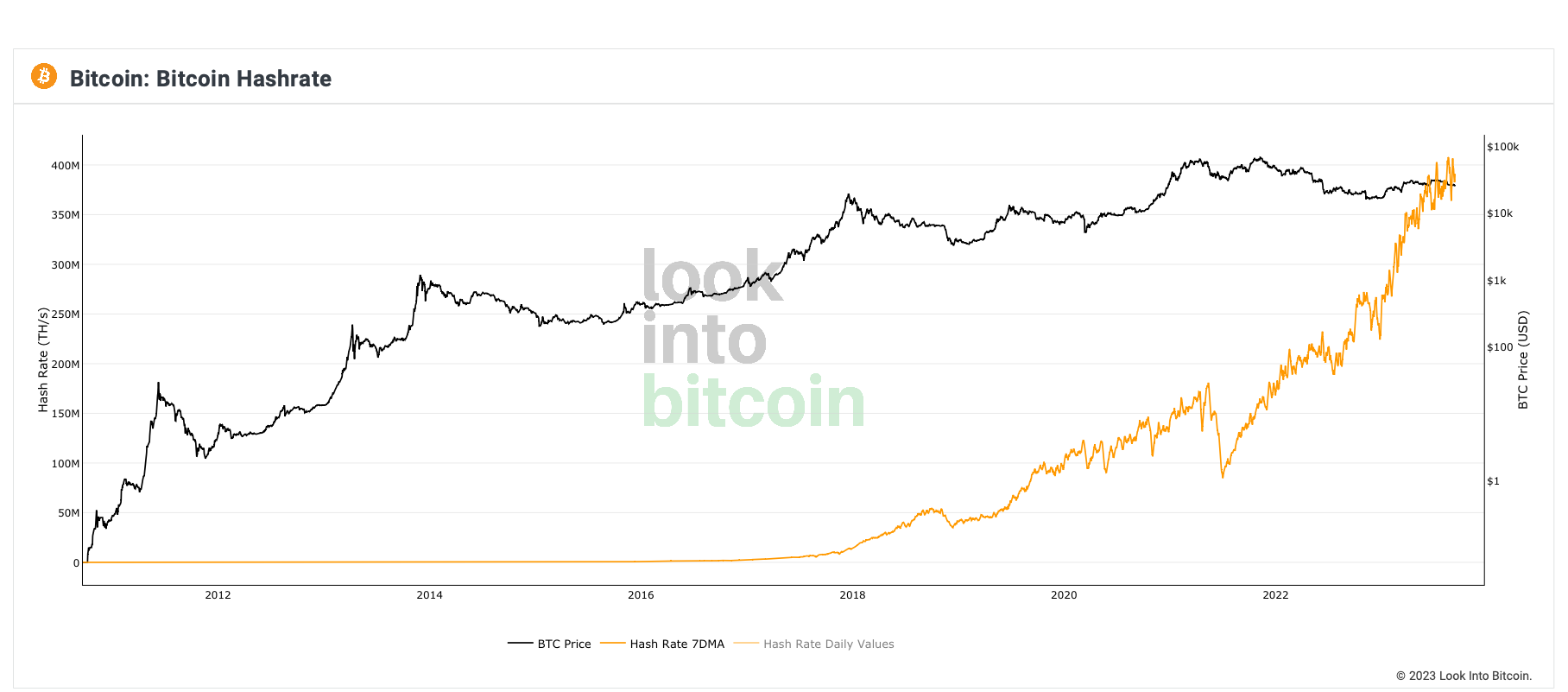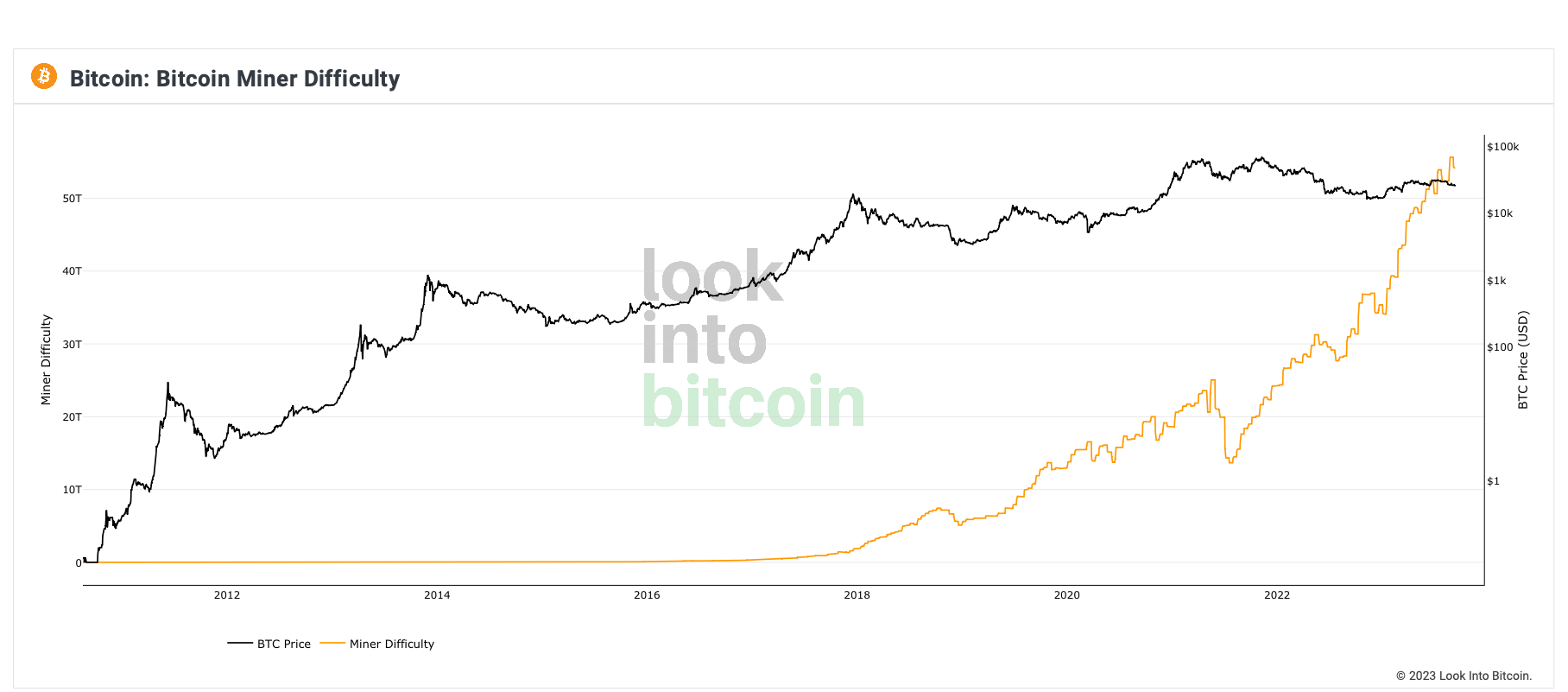- The Bitcoin network exhibits increased security with a surging hashrate and escalating difficulty levels.
- Recent data reveals a peak hashrate of 391K and difficulty touching 54.150 trillion.
- This surge hints at a fortified network, minimizing possibilities of attacks.
As Bitcoin’s hashrate scales new heights, hitting a record 391K on September 13, 2023, and difficulty levels peak at 54.150 trillion, the network promises enhanced security and resilience, making a case for robust investment and utilization opportunities.
Unveiling the Bitcoin Network’s Fortified Security Parameters

Undoubtedly, the Bitcoin network’s security seems to be on a steady uptick, demonstrated by the record-breaking hashrate levels witnessed recently. This parameter, which measures the computational power deployed to secure the network, has exhibited a noticeable rise since the beginning of the year. Starting at around 200K in January, it experienced a consistent climb, reaching 250K by March and subsequently escalating to 300K in April. The crescendo continued until it touched a remarkable 391K on September 13, 2023, showcasing a fortified network prepared to ward off potential attacks. This surge in hashrate is coupled with an increase in the network’s difficulty levels, currently standing at an impressive 54.150 trillion, making the mining process more intricate and securing the network further against potential breaches.

Exploring the Positive Implications of Rising Hashrate and Difficulty Levels
The ongoing surge in Bitcoin’s hashrate and difficulty levels carries positive implications for the network’s security. The difficulty parameter, indicative of the complexity involved in mining a new block, adjusts in accordance with the hashrate, rising as the latter increases and vice versa. This automatic adjustment mechanism ensures that potential attacks are thwarted efficiently, promising a secure and reliable network for users and investors. Furthermore, this upward trajectory in the network’s key parameters signals a healthy and resilient ecosystem, poised to sustain its functionality even amidst fluctuating market prices.
Assessing the Broader Picture: Other Factors Influencing Bitcoin’s Network Security
While the soaring hashrate and difficulty levels undeniably point towards a fortified Bitcoin network, it’s essential to consider other influential factors in this narrative. The number of nodes operating on the network and the energy consumed during the mining process are vital parameters that significantly affect the network’s overall security. Maintaining a high number of nodes ensures decentralized control and reduces vulnerabilities, while the energy consumption aspect necessitates a continuous evaluation to ensure sustainability. Hence, while celebrating the enhanced security indicated by the rising hashrate and difficulty levels, a comprehensive monitoring approach that encompasses other critical factors is vital in sustaining and further boosting the network’s security.
Conclusion
The ascending trajectory of the Bitcoin hashrate and difficulty levels undoubtedly brings a wave of positivity for the network’s security dynamics. It infers a resilient and fortified network capable of resisting potential attacks, fostering a sense of reliability and safety among Bitcoin holders and users. Nevertheless, it remains imperative to maintain a vigilant eye on other influencing factors, including the number of operational nodes and energy consumption metrics, to ensure a comprehensive assessment of the network’s security status. As we navigate this upward trend, fostering a balanced perspective that encourages continuous monitoring and analysis will pave the way for a secure, robust, and thriving Bitcoin network.
